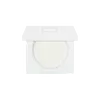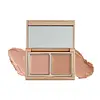What's inside
What's inside
 Key Ingredients
Key Ingredients

 Benefits
Benefits

 Concerns
Concerns

 Ingredients Side-by-side
Ingredients Side-by-side

Glycine Soja Oil
EmollientBis-Diglyceryl Polyacyladipate-2
EmollientSynthetic Beeswax
Emulsion StabilisingCaprylic/Capric Triglyceride
MaskingPolybutene
Microcrystalline Wax
Emulsion StabilisingOctyldodecyl Stearoyl Stearate
EmollientCopernicia Cerifera Cera
EmollientCandelilla Cera
EmollientPhenoxyethanol
PreservativeTocopheryl Acetate
AntioxidantCI 77891
Cosmetic ColorantCI 77491
Cosmetic ColorantCI 77492
Cosmetic ColorantCI 77499
Cosmetic ColorantCI 19140
Cosmetic ColorantCI 42090
Cosmetic ColorantCI 77007
Cosmetic ColorantCI 77742
Cosmetic ColorantCI 15850
Cosmetic ColorantGlycine Soja Oil, Bis-Diglyceryl Polyacyladipate-2, Synthetic Beeswax, Caprylic/Capric Triglyceride, Polybutene, Microcrystalline Wax, Octyldodecyl Stearoyl Stearate, Copernicia Cerifera Cera, Candelilla Cera, Phenoxyethanol, Tocopheryl Acetate, CI 77891, CI 77491, CI 77492, CI 77499, CI 19140, CI 42090, CI 77007, CI 77742, CI 15850
Polyglyceryl-2 Triisostearate
EmulsifyingDiisostearyl Malate
EmollientPolybutene
Triethylhexanoin
MaskingPentaerythrityl Tetraisostearate
EmollientHydrogenated Microcrystalline Cera
Mica
Cosmetic ColorantSilica
AbrasiveIsononyl Isononanoate
EmollientBis-Diglyceryl Polyacyladipate-2
EmollientCopernicia Cerifera Cera
EmollientWater
Skin ConditioningCaprylyl Glycol
EmollientHydroxyacetophenone
AntioxidantTocopheryl Acetate
AntioxidantCI 77891
Cosmetic ColorantCI 77491
Cosmetic ColorantCI 77492
Cosmetic ColorantCI 19140
Cosmetic ColorantCI 42090
Cosmetic ColorantCI 77499
Cosmetic ColorantPolyglyceryl-2 Triisostearate, Diisostearyl Malate, Polybutene, Triethylhexanoin, Pentaerythrityl Tetraisostearate, Hydrogenated Microcrystalline Cera, Mica, Silica, Isononyl Isononanoate, Bis-Diglyceryl Polyacyladipate-2, Copernicia Cerifera Cera, Water, Caprylyl Glycol, Hydroxyacetophenone, Tocopheryl Acetate, CI 77891, CI 77491, CI 77492, CI 19140, CI 42090, CI 77499
Ingredients Explained
These ingredients are found in both products.
Ingredients higher up in an ingredient list are typically present in a larger amount.
This ingredient is lipid-based synthetic skin-conditioning agent derived from adipic acid and a mixture of fatty acids. It is often called a lanolin substitute.
As an emollient, it helps soften and hydrate the skin. Emollients create a barrier on the skin to trap moisture in.
Due to its fatty acid base, it may not be Malassezia folliculitis safe.
Learn more about Bis-Diglyceryl Polyacyladipate-2CI 19140 is also known as Tartrazine. Tartrazine is a synthetic dye used in cosmetics, foods, and medicine to add a yellow color.
Tartrazine is created from petroleum and is water-soluble.
Some people may experience allergies from this dye, especially asthmatics and those with an aspirin intolerance.
Learn more about CI 19140Ci 42090 is a synthetic dye created from petroleum. It is used to give a bright blue color to cosmetics, medicine, and food.
Ci 77491 is also hydrated iron III oxide. It's sole purpose is to give a red/pink hue to products.
Iron III oxides are classified as inorganic chemicals for coloring.
Synthetically created Ci 77491 is considered safer than those naturally found. This is because the synthetically created version may contain less impurities. Iron oxides are generally non-toxic and non-allergenic.
Learn more about CI 77491Ci 77492 is also hydrated iron III oxide. It's sole purpose is to give a yellow hue to products.
Iron III oxides are classified as inorganic chemicals for coloring.
Synthetically created Ci 77492 is considered safer than those naturally found. This is because the synthetically created version may contain less impurities. Iron oxides are generally non-toxic and non-allergenic.
Learn more about CI 77492Ci 77499 is also hydrated iron III oxide. It is created from mixing red and black iron oxides. This helps give shades of darkness to a product.
Iron III oxides are classified as inorganic chemicals for coloring.
Ci 77891 is a white pigment from Titanium dioxide. It is naturally found in minerals such as rutile and ilmenite.
It's main function is to add a white color to cosmetics. It can also be mixed with other colors to create different shades.
Ci 77891 is commonly found in sunscreens due to its ability to block UV rays.
Learn more about CI 77891This ingredient comes from a palm tree native to Brazil. This ingredient is used to thicken texture and leaves behind a film when applied.
Polybutene is used to help control the viscosity of a product. This just means it helps adjusts the texture.
It is a polymer and does not get absorbed into the skin due to its large size.
Studies found this ingredient did not irritate skin in concentrations below 15%.
Learn more about PolybuteneTocopheryl Acetate is AKA Vitamin E. It is an antioxidant and protects your skin from free radicals. Free radicals damage the skin by breaking down collagen.
One study found using Tocopheryl Acetate with Vitamin C decreased the number of sunburned cells.
Tocopheryl Acetate is commonly found in both skincare and dietary supplements.
Learn more about Tocopheryl Acetate